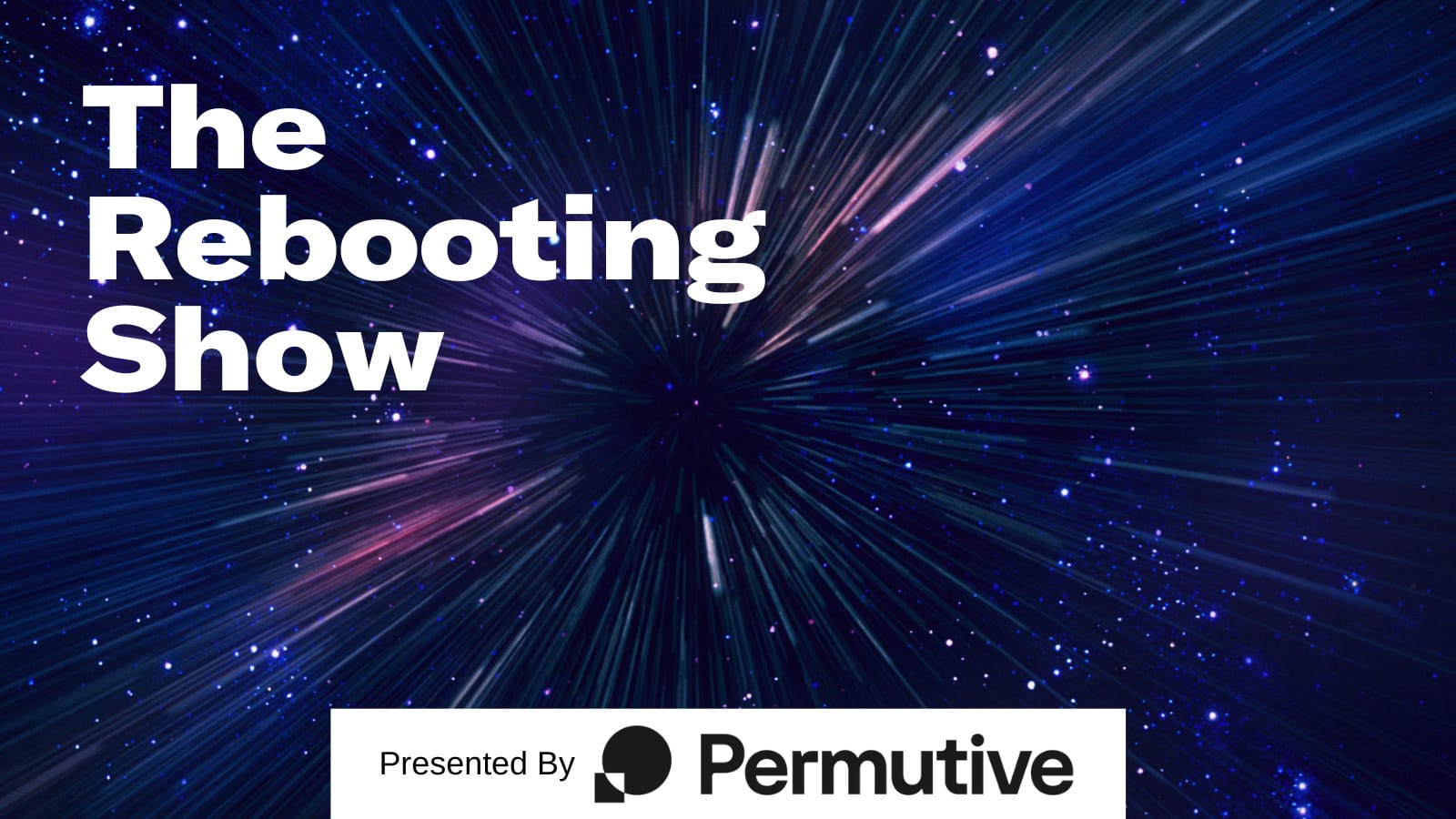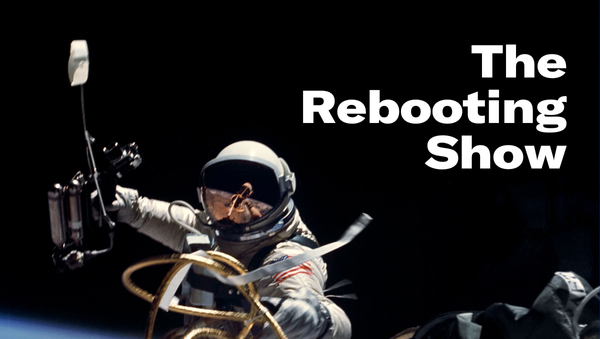The Barstool playbook
Deirdre Lester sees Outsider as a brand celebrating "the American lifestyle"

I’ve spent the last week in Portugal, making my way to Lisbon. My spot check says that any Omicron fears, inflations jolts and cost-of-living crisis has not dented the appetite for summer travel. I’m off to Porto later today, so send along any suggestions for there: bmorrissey@gmail.com.
This week:
- Outsider CEO Deirdre Lester discusses how to build a media brand into a lifestyle brand
- A different way of thinking of personalization
- Growing up analog
First, a message from Permutive. Really appreciate the support from Mindi, Mike and Joe. They’ve been great partners and are well-positioned for the next phase of digital advertising that’s going to revolve around consent vs do whatever you can get away with, apologize to regulators later. Check out the chat Joe and I had about the impact of privacy regulations.

Audience-owners are the guardians of user data. By ensuring that it is protected, publishers and advertisers regain their central place in the process of discovering, planning for and activating audiences. Permutive ensures that every targeted ad impression, from open auctions to direct, is based on consented, non-PII, directly-sourced data. The Permutive Audience Platform empowers publishers and advertisers to responsibly activate audiences without any third-party access to personal data.

Outsider CEO Deidre Lester on building a lifestyle brand
There are a lot of ways to win at publishing, but I believe the next set of great brands will be built around like-minded communities. Once you put yourself at the center of a community, you have a lot more options for building a sustainable media business.
That’s why Barstool Sports is a consequential media company. People get caught up in all the controversies. Look beyond them to appreciate this is a brand that means something to its audience – you can actually use community here – to a remarkable extent. That deep audience connection, along with its polarizing reputation, gave Barstool the opportunity to build a direct-to-consumer media model. That’s why they’ve been able to expand their business in several directions, including running a sports book through its tie-up with Penn National, opening a line of Barstool sports bars, running an amateur boxing tour and rolling out a growing line of products.
Deirdre Lester, who was CRO at Barstool for four years until departing in March to become CEO of Outsider, told me on this week’s episode of The Rebooting Show that from the start of joining Barstool her eyes were opened by how many people wanted to wear merch with the logo of Barstool or its sub-brands like Pardon the Interruption and Spittin Chiclets.
“What struck me was the size of the e-commerce business. In 2017, it was primarily t-shirts, hoodies, and other wearable merchandise. People wanted to wear that because they were part of a community and they wanted to represent that. And it's not that different than with a sports team. We were a badge of honor they were proud to wear.”
Shannon Terry, founder of Rivals.com, 24/7 Sports and other publishing ventures, founded Outsider as a lifestyle brand focused on a particular view of “the American lifestyle” that, to me, takes its cues from the South, emphasizing college football, hunting, fishing, wraparound sunglasses and the like. (I don’t believe in an impossibly diverse country of 330 million there’s “an” American lifestyle. There are many. This is one.) The goal is similar to Barstool: Use personality-driven publishing – former NFL QB Jay Cutler is chief design officer at Outsider – to build a deep connection with a like-minded community, then complement the media with commerce operations. Some key takeaways from our conversation:
Finding the sweet spot between individuals and institutions is a big opportunity. The unbundling of publishing has put the focus on individual creators, but there are only so many Mr. Beasts in the world. The more tangible opportunity is the Goldilocks approach with institutional brands that can tap into the power of individuals to establish tight ties with an audience. Outsider is doing that with Cutler and popular podcaster Marty Smith.
Lifestyle publishing brands are more about AOV than CPM. Publishing has been stuck in a default mindset that the audience either pays with data and attention to ads or with money through subscriptions. Commerce – real commerce, not just affiliate links – offers a third way to build product companies with media used for efficient distribution and, ideally, premium pricing power based on the credibility established with customers.
Doing both media and products is hard. These are different businesses with different dynamics. The rough patch hit by Food52, a prime example of publishers pivoting to product, shows how difficult it is to manage both publishing and products. Publishing is all about managing conflicts, and that can get even messier when publishing is in the service of moving products.
Check out the full conversation with Deirdre on Apple, Spotify and Anchor. Send along your feedback to bmorrissey@gmail.com or just hit reply to this email.

Rethinking personalization
People in digital media love talking about personalization. It’s telling how impersonal their default assumption of personalization is. Most times, personalization is a euphemism for collecting lots of data and targeting content, both editorial and commercial, at users. At its best, this provides a mechanized, scalable approach to presenting people with products that feel on some level unique to them. It is also devoid of humanity. One presentation at the FIPP World Congress made the simple observation that a call-to-action to subscribe with the human behind the product’s name on it performed far better. Go figure. One lesson of the pandemic era, and the forced separation we all underwent, is that humans gravitate to other humans. Media should take that cue to build more human products rather than try to out-tech tech in manipulating user data. That’s important, don’t get me wrong, but it’s hard for me to believe most publishers will win at this.

On growing up analog
Being away for the last week has made me remember how different traveling was when I was in college in the mid-1990s. It was the last time that you went away and were mostly cut off from life back home, outside an occasional phone call and regular letters written on wafer-thin Par Avion envelopes. Life was a lot more random then. I lived in Belgium in 1993, and I went to visit a college friend studying in Florence. We set the time as one of like three days, and I just had an address. We showed up at his apartment one night, not having any idea if he’d be there. Somehow, some way, things just worked out. And if they didn’t, you just adapted and again, for the most part things worked out. I had this experience a couple years ago when I lost my phone in a cab in Kyoto, meaning I spent a weekend in Tokyo without the lifeline that Google Maps has become. Sometimes I found places, sometimes I didn’t and just went somewhere else. That kind of serendipity has mostly gone from life. I’m biased, but I think those kinds of experiences are what makes Gen X an overlooked but pivotal generation. We know the Old World, we lived in it, but we’ve spent most of our adult lives in the New World. But I think most importantly, the analog world was more capricious.

Thanks for reading. I’m going to spend the rest of the week in Porto, so send me any tips for things to check out. Also, I’ll be in Cannes next week. Send me the good party invitations: bmorrissey@gmail.com.





